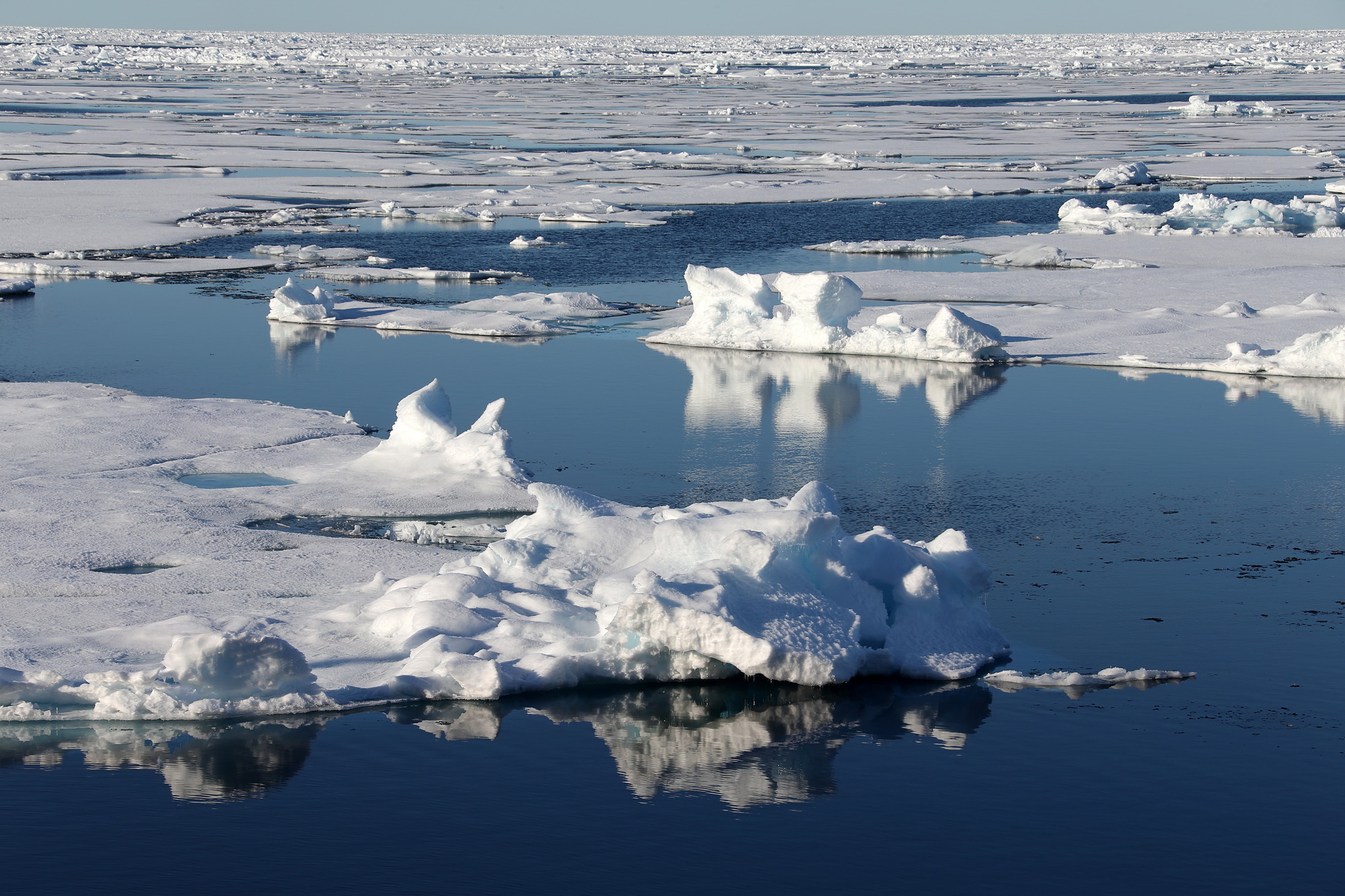
Two forms of open water areas can occur in the winter ice-cover: 1) flaw lead systems – discontinuities between the land-fast ice and off-shore sea-ice or 2) polynyas – where ice is carried away by winds or currents or melted by the local convection of warm deep water masses. Land-fast ice (up to 2 m in thickness) grows seaward from the shore and usually extends to the 20 m isobath. The average thickness of sea ice in the Arctic Ocean is about 3 m. The inflows of warm Atlantic waters usually keeps the southern part of the Barents sea ice-free year round. The spatial extent of sea ice varies from 14-15 mln km 2 in March to 6-7 mln km 2 in September (Fig. The ocean’s interior is all year covered with perennial (multi-year) pack ice, while seasonal (first-year) ice-cover is formed on the marginal seas from October to June. The polar halocline isolates surface water masses and sea-ice from warm deep water and thus acts as a determining factor for the existence of all-year sea ice cover. A graphic produced by Philippe Rekacewicz, (UNEP/GRID-Arendal) and available at (Last visited March 11, 2009) Warm and high salinity Atlantic water inflow the Arctic Ocean via the Fram Strait and the Barents Sea.įigure 3: Surface circulation and sea ice extent in the Arctic Ocean. The cold and low salinity Arctic surface waters are exported to the North Atlantic Ocean by East Greenland Current and through the Canadian Archipelago. The dominant features of the surface circulation are the clockwise Beaufort Gyre (over the Canadian Basin) and the Transpolar Drift (flowing from the Siberian coast towards the Fram Strait) (Fig. Deeper water masses are formed by transformed Atlantic waters. Polar halocline (a layer of cold water with a steep salinity gradients) forms below PML and limits the exchange between surface and deep ocean water masses. The low-saline, cold surface waters occupy the upper ~ 50 m and form PML (Polar Mixed Layer) (Fig. The low- salinity water from Pacific Ocean inflows via Bering Strait. The major freshwater sources include: rivers (Arctic Ocean receives around 11 % of the global river runoff discharge), precipitation and ice melt. The stratification in the Arctic Ocean is maintained by the fresh water dynamics. The Lincoln Sea and the adjacent area of the Northern Canadian Arctic Archipelago are the deepest portions of the Arcic Ocean shelve seas (mean depths – 257 and 338 m, respectively).Īrctic Ocean is nearly landlocked, the only connections to the other oceans are: 1) Bering Strait (depth 45 m), 2) Canadian Archipelago (depth 220 m) and 3) Fram Strait (depth 2600 m).įigure 2: Stratification of the Arctic Ocean water masses and seawater exchange with Pacific and Atlantic Oceans. The Laptev and East Siberian Seas are the shallowest (mean depths – 48 and 58 m, respectively). The Barents Sea is the largest of the epicontinental seas. 1).Ĭontinental shelves encompass broad shelves of Eurasia and narrow shelves off North America and northern Greenland and altogether make up as much as 53 % of the total area of the Arctic Ocean. Gakkel Ridge subdivides Eurasian Basin into Amundsen and Nansen Basins, while the Alpha-Mendelejev Ridge subdivides Amerasian Basin into Canada and Makarov Basins (Fig. Lomonosov Ridge divide the Arctic Basin into two major sub-basins: Eurasian Basin and Amerasian Basin. The abyssal plains make 12 %, while ridges make 16 % of the total area of the Arctic Ocean. The deep central Arctic Ocean Basin consists of four abyssal plains separated by submarine ridges. The Arctic Ocean is the shallowest (mean depth 1361 m) and has significantly larger continental shelves than other oceans. Īrctic Ocean and its constituent seas make around 3 % of the total ocean area and only about 1 % of the volume. The bathymetric map is based on IBCAO model v.2.

Main basins of the deep Arctic Ocean basin: NB – Nansen Basin, AB – Amundsen Basin, MB – Makarov Basin, CB – Canada Basin. Red dotted line indicates the limits of the Arctic Ocean.

Figure 1: Arctic Ocean and its constituent seas.


 0 kommentar(er)
0 kommentar(er)
